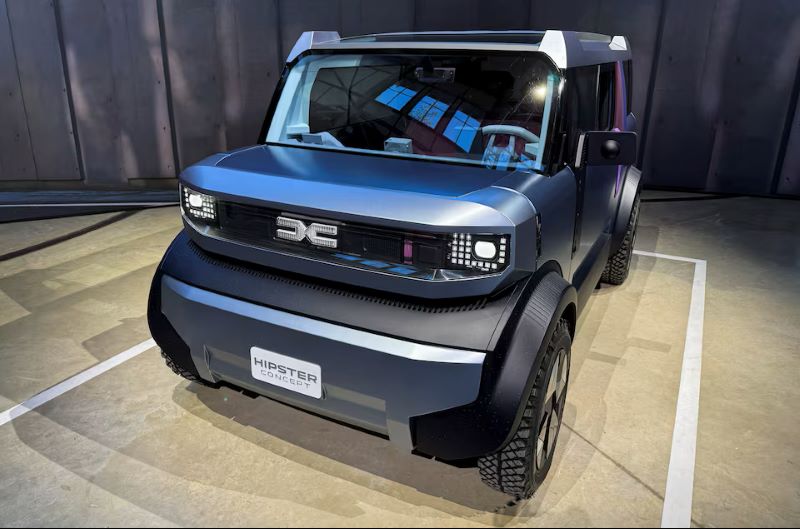MEUDON: Renault’s budget-friendly brand, Dacia, presented a prototype for an electric mini-car on Monday, a model that could be priced below 20,000 euros ($21,000) and offer a competitive option against low-cost Chinese electric vehicles (EVs).
Dubbed the “Hipster Concept,” the vehicle’s production is contingent on the European Union approving a new category for small cars. The design is exceptionally compact, measuring just 3 meters (9.84 ft) in length and weighing under 800 kg (1,764 lbs). This makes it significantly smaller than the current shortest car on the European market, Leapmotor’s T03, which is 62 cm longer.
The Hipster represents “a concept of Dacia’s bold vision for local, affordable, and everyday mobility,” stated Dacia’s CEO, Katrin Adt, who recently joined from Mercedes-Benz. She added, “If the opportunity for mass production arises, we are prepared.”
The boxy, three-door prototype would have a top speed of approximately 90 km/h (56 mph) and a driving range of 150 km (93 miles). Dacia cites data showing that the average car is driven less than 40 km daily at an average speed of 56 km/h, suggesting this specification meets typical urban needs.
To drastically reduce costs, Dacia has simplified the Hipster’s design. It features canvas seats, a minimal amount of electronics, manually operated windows, and fabric straps in place of traditional door handles. The production model may be offered in a single color, such as the grey-blue shade of the prototype.
Renault and Stellantis are leading an initiative for a new EU small car category, inspired by Japanese Kei cars, which would have fewer mandatory features than standard vehicles, particularly regarding safety equipment. Advocates contend that for urban and suburban use, a car can forgo many features while remaining safe, and that this is the only viable path to significantly reduce both weight and price.
Dacia estimates that the average price of a new car increased by 63% between 2001 and 2020, creating a need for more affordable models in Europe. However, the proposed new vehicle category, which is currently under discussion, would likely come with stipulations.
“The regulations will almost certainly require the vehicle to be manufactured in Europe,” David Durand, Dacia’s design director, told Reuters. “We also need to develop the corresponding industrial model for it.”














